Context
The things that surround us, the objects and artefacts, speak to us. They speak to our bodies and minds, telling us what to do and how to behave. Through this speaking, the things define our consciousness and shape our identity, more so than we take for granted. The language of things is universal, and of all times. It is the language of the physical world, understood by all people, young and old.
However, in the last decades there has been a fundamental shift, causing things and their language to lose importance. The dominance of laptops, tablets and smartphones, is causing physical objects to dematerialize into icons on a display. Calculators, notebooks, agendas, cameras, music players and remote controls are disappearing, giving way to on-screen applications. The digital world is growing, at the expense of the physical world, and at the expense of the things that populate it. Also in our consciousness, the digital world is taking an increasingly prominent place. When we interact with our smartphone, we forget everything and everyone around us. We are sucked, as it were, into a dialogue with a world of light behind a glass plate, and are detached from our physical environment and social context. I celebrate the flexibility and versatility of these computational devices. On the other hand, I have strong reservations about what is in danger of being lost.
In the physical world, and in the things that inhabit it, there are specific values that can’t be found in the digital. These values are related to tactility, persistence, and uniqueness. Physical things have a three-dimensional shape, a texture, mass and inertia. They falter and wear down, showing traces of their own past. Our interaction with them takes time and effort. Unlike digital phenomena, physical things are not always fresh and new, and not flexible and reproducible. I think the values of physical things are of capital importance to every human being. In my research, I advocate rethinking the balance between physical things and digital phenomena, starting resolutely from the physical.
My research is situated within the research domain of embodied interaction with digital products and systems. It concerns the language of things, but also expresses itself in it. This means that I do not primarily think, but make. My research results in physical prototypes, from which a rational emerges.
Topics
1. The Enriching Physical
My research focuses on embodied interaction with digital products and systems. The concept of embodied interaction posits that digital phenomena should be interacted with in a manner that is not perceived as computer-like, but rather in a way that is grounded in physical reality. In the perspective of embodied interaction, digital phenomena are embodied by physical artifacts, and spread out over the physical environment, in such a way that our interaction with them becomes more direct, natural and intuitive.
The Enriching Physical as a research stance posits that embodied interaction is not merely about making interaction with technology and the digital world more natural and intuitive. It is about our human rootedness in the physical world, and the fundamental values that the physical world stands for, namely persistence, slowness and fragility. I believe that these values extend beyond the instrumental and the pragmatic, and make up the very essence of what it is to be human. Perhaps these physical values, that we tend to experience as limitations, are in fact characteristics that enrich our interaction with digital technology with weight and meaning. They make human interaction with digital phenomena more substantial, important and valuable.
In 2014, I designed and built a digital payment terminal that, through physical interaction, gives the user the feeling of actually transferring money. You can see here how it works.
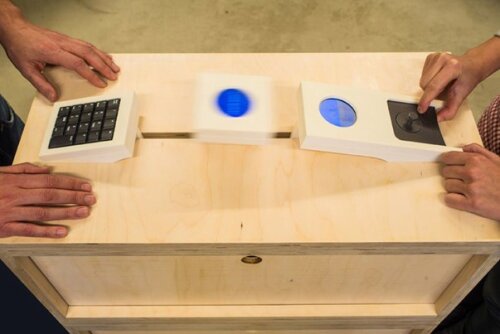
In 2015, I designed and built a night lamp for children, that makes the light in the lamp tangible for the child. You can see a video here.
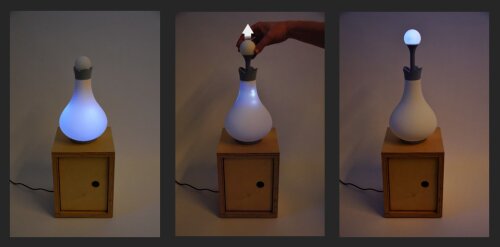
In the years that followed, the payment terminal and the night lamp inspired a wave of research and student work, with numerous prototypes reconciling the values of the physical and the digital. Videos of these student projects can be seen here: Ilo, Balans, Furo, Photo Projector, Piriwit, Somnus, Yoki
2. Research through Design
My research methodology is Research through Design (RtD). Within RtD, the designer/researcher generates knowledge through the act of designing. In an iterative process where design and reflection are continuously interchanged, possible future scenarios are explored and verified. I believe that the specific nature of design skills and design knowledge leverage a unique research approach, which allows the designer/researcher to do what he/she does best: thinking in possibilities.
The knowledge resulting RtD crystallizes in two different ways. First, there is the overall rationale that was developed during the research process. This rationale is established in written outcome. Second, there are the several artifacts that were built. They constitute the non-written outcome of the RtD process, and they illustrate and particularize the written rationale. They are called demonstrators or physical knowledge carriers.
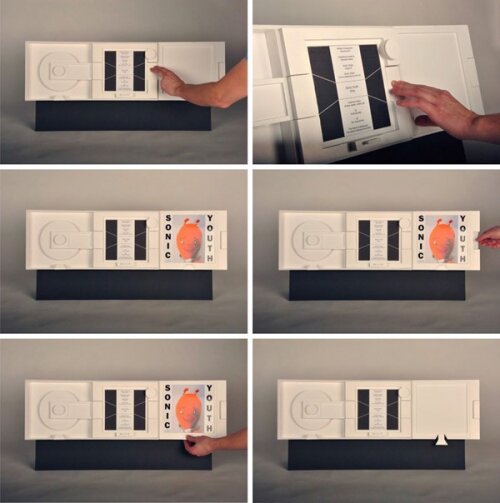
Cardboard model for a conceptual audio system, 2011.
3. Ground Eight
In order to introduce Research through Design to the Flemish industry, I founded the research group Ground Eight, together with Achilles Design. In Ground Eight, we look for new ways to merge digital phenomena with the physical world. This research results in physical demonstrators for companies like Audi Brussels, Kuka Belgium, CNH Industrial and Colruyt Group. You can see the videos of these prototypes by clicking the subscription under the picture.
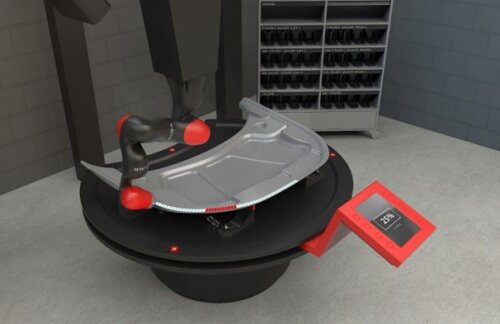
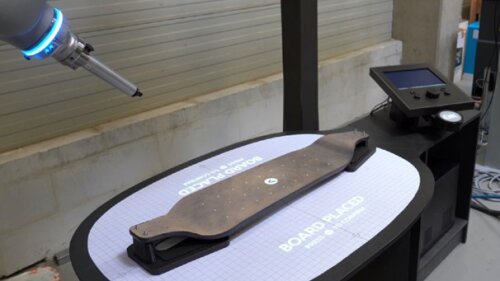
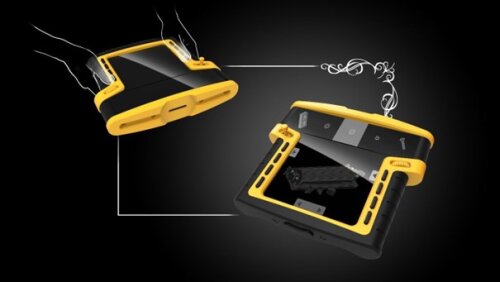
The CNH Industrial Demonstrator
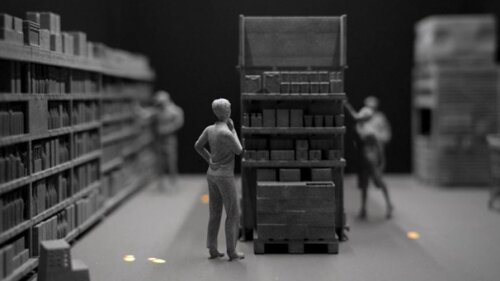
The Colruyt Group Demonstrator
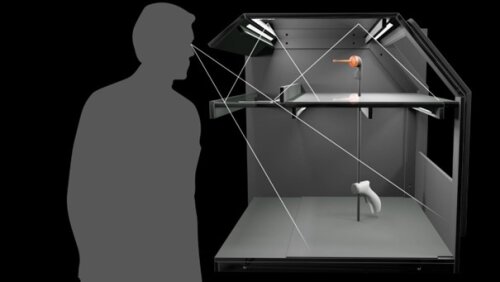
4. Invention in Medicare
Together with Antwerp Design Factory, I am involved in the invention, development and valorisation of various medical products. I see a significant opportunity for innovation and valorisation in the triangle of Product Development, the Faculty of Medicine and Health Sciences and the Antwerp University Hospital. Research through design plays a capital and propelling role in this collaboration. So far, it has resulted in three medical product concepts, all of which are patent pending. Click the subscription under the picture to get more info on the project.
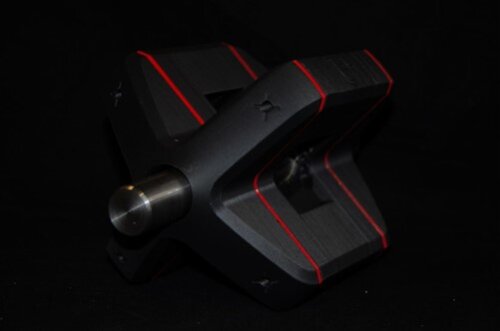
Cyclome: a device for the measurement of bodily forces on a bicycle handlebar.
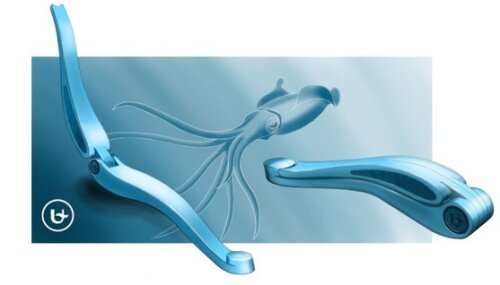
Femiset: a tool to facilitate defecation in women with perineal descent.
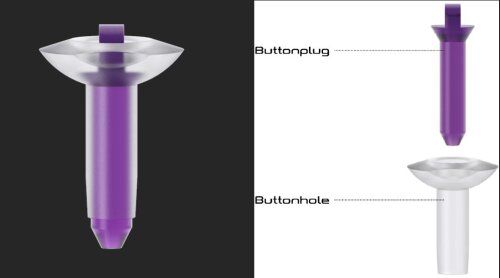
Buttonaid: a medical instrument that facilitates hemodialysis treatment.
Services
- Innovation brainstorms
Projects
VLAIO ICON: Ground Eight
Abstract: Ground Eight was established by Lukas Van Campenhout at Achilles Design, as a place where professional designers do research. We believe that the specific nature of design skills and design knowledge leverage a unique research approach, which allows the designer/researcher to do what he/she does best: thinking in possibilities. At Ground Eight, we think ‘what can be’, rather than ‘what is’.Our work is fundamentally human-centered. Design is in the first place about people, about how people act, think and feel in the everyday world, and how they interact with each other. Technology and economics obviously influence our research, but they are not our main objective. For us, they form a means to an end, rather than being a goal in themselves.Our interest lies in interaction with digital products and systems. Within this field, our research scope centers on Embodied Interaction and User Experience.
Funding: VLAIO ICON
Partners: Flanders Make, Audi, Kuka, CnH Industrial
Period: 2016 – present
Take a look at ground-eight.com
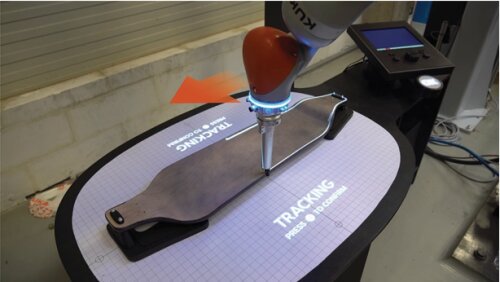
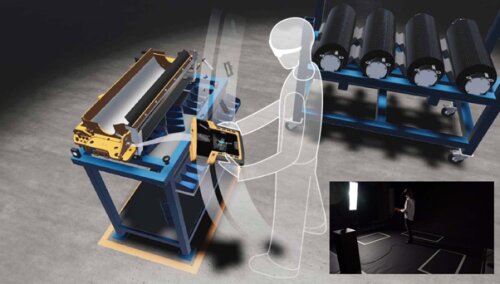
The Enriching Physical
Abstract: How can we make human interaction with digital phenomena more substantial, important and valuable? One way of doing that is by enriching them through physical artefacts and environments. This approach is very much situated within the research tradition of embodied interaction, which describes the interplay between the brain and the body and its influence on the sharing, creation and manipulation of meaningful interactions with technology. Note that embodiment interaction is not merely about making interaction with technology and the digital world more natural and intuitive. It is also about deepening our rootedness and embedment in the physical and social environment. Perhaps the aspects of the physical world that we tend to experience as limitations (e.g. persistence (?), slowness and fragility), are in fact the characteristics that can provide weight and meaning to our interaction with digital technology. It’s not just about designs that are instrumental and pragmatic, its about exploring the essence of what it means to be human through the design of artefacts and technology.
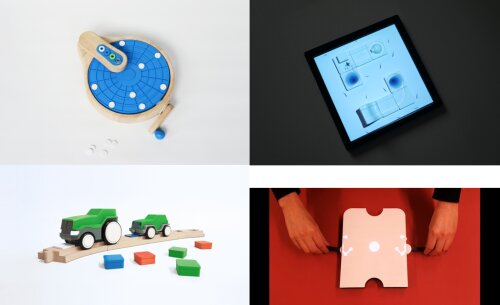
Researcher: Marieke Van Camp
Supervisor: Lukas Van Campenhout
Funding: VLAIO/IWT research project - Dehousse project
Period: 2015-2021
Partner: Clics (clicstoys.com)
Femiset
Abstract: The planned project is a continuation to the thesis project of Kaat Robberechts (academic year 2022-2023), in which a tool (Femiset) was developed to alleviate defecation difficulties in women suffering from Descending Perineum Syndrome (DPS). Perineal descent is the medical term for excessive descent of the perineum when subjected to pressure from above, such as when making bowel movements. This can lead to symptoms of obstructive defecation, including a sensation of incomplete evacuation, tenesmus, fragmentation of stool, faecal urgency and faecal incontinence. This issue was brought to our attention by specialists at the Antwerp University Hospital (UZA), with whom close collaboration took place throughout the thesis. The designed solution includes a tool that allows the patient to apply mechanical counterpressure to the site of prolapse during defecation, offering a discrete, hygienic and non-invasive way to control the complications associated with the syndrome. Femiset is available in two different models: a static model, where a constant pressure is applied, and a dynamic model where the pressure can be varied manually during defecation. In a first phase of the project, the models will be fine-tuned for use in a clinical trial. In a second phase, both models will be tested in a clinical trial on 20 patients. The results of this study will be used in a third phase to optimise the product and further strengthen the patent application. This optimisation phase will result in three high-end prototypes of each model, closely resembling series products. During the course of the project, different valorisation routes (licensing/sale/spin-off) will be evaluated so that steps can be taken towards commercialisation by the end of the project.
Researcher(s): Sien Heirbaut
Promotor: Lukas Van Campenhout
Research team(s): Antwerp Design Factory
Project type(s): IOF POC Develop
ButtonAid
Abstract: In this Proof-of-concept (POC) project proposal, we propose Buttonaid, a simple and innovative product solution that facilitates hemodialysis therapy using the buttonhole method for both patients and nurses. Buttonaid is the result of Florentijn Vandecasteele's master's thesis Product Development, supervised by Prof. Lukas Van Campenhout. In this proposal, we have set out four tracks. The first is to fine-tune the current solution and finalise the Ethics Committee approval process. The second track will be to test the solution in vivo. In a third track, we will prepare the launch of Buttonaid by drawing up detailed technical plans and approaching potential industrial partners. The final stage is an overarching one: intellectual property protection through patenting. The end result of the project is fourfold. First, it results in a physical product ready for industrialisation. Second, there will be the results of the in vivo test. Thirdly, there will be a plan for the acquisition of the product by an industrial partner. Fourth, within this POC, the path to a patent is initiated.
Researcher(s): Florentijn Vandecasteele
Promotor: Lukas Van Campenhout
Research team(s): Antwerp Design Factory
Project type(s): IOF POC Develop
Cyclome
Abstract: This project focuses on the further development of a racing bike handlebar for an indoor bike trainer. The handlebar's functionality is aimed at both clinical and performance enhancement applications. The result of this project is a marketable product design that can be used in the practice of professional bike fitters and physiotherapists.
Researcher(s): Alexander Van Gastel, Sien Heirbaut
Promotor: Lukas Van Campenhout
Research team(s): Antwerp Design Factory
Project type(s): IOF POC Develop
Design for Embodied Mediation
Abstract: This project focuses on the further development of a racing bike handlebar for an indoor bike trainer. The handlebar's functionality is aimed at both clinical and performance enhancement applications. The result of this project is a marketable product design that can be used in the practice of professional bike fitters and physiotherapists.
Researcher(s): Omar Martínez Gasca
Promotor: Lukas Van Campenhout
Research team(s): Embodied Interaction Lab
Project type(s): DOCPRO PhD
Personalized urotherapy at home to improve the care pathway of children with Lower Urinary Tract (LUT) dysfunctions.
Abstract: The products and services supporting urotherapy play a crucial role in the effectiveness of therapy. The traditional urotherapy products are often paper-based solutions
and the little technology used, can be perceived as outdated. For example, traditional paper- based bladder diaries are described by patients as cumbersome and inconvenient, resulting in low patient compliance. Several innovations have been introduced to overcome these obstacles, such as digital bladder diaries and a urotherapy gaming application. However, all had limited or no effect. A potential reason is the design methodology behind these innovations, which focuses on scientific evidence to make sure the design complies with evidencebased guidelines. In contrast, user needs are not or insufficiently investigated during the design process, resulting in innovations that do not fulfill users' expectations.
We believe the design of effective healthcare innovations requires a new approach that combines objective knowledge (Evidence Based Design) with subjective user experience (User Experience Design). It is our hypothesis that the combination of both design methodologies will lead to stronger design propositions, enhancing treatment outcomes and patient experience. In this research project we will investigate the impact of this integrated approach by applying it to the design of an ecosystem of interlinked products and services to offer personalized urotherapy at home.
Researcher(s): Lola Bladt
Promotor: Lukas Van Campenhout
Research team(s): Embodied Interaction Lab
Project type(s): Baekeland PhD
Related courses
Team
Principal investigators:
Researchers:
Alumni researchers: